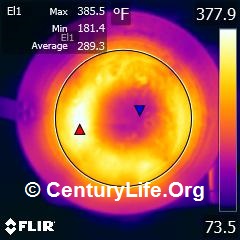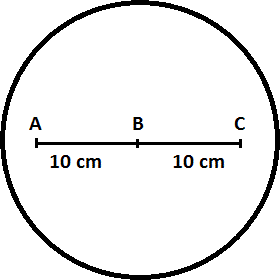
For electric coil/induction/radiant/halogen rankings, please see Even Heating Rankings (Induction and Electric). For more details on testing methodology, see here.
EVERY COMPANY CLAIMS THAT THEIR COOKWARE IS EVEN-HEATING, BUT IS THAT TRUE?
The job of stovetop cookware is a) to smooth out the uneven heat coming from the burner underneath so that the entire cooking surface of the cookware is the same temperature; and b) to keep your food in the Maillard reaction temperature zone–not too hot and not too cold. If you have too much of an imbalance in temperatures, you wind up with hot or cold spots that can undermine your dish by leaving some food overcooked and some food undercooked. You may even scorch carcinogens into your food or produce carcinogenic smoke, if some hotspots grow hotter than the oil’s smoke point while you are waiting for non-hotspots to catch up in temperature. (Hotspotting is particularly troublesome on nonstick pans because you can overheat the hotspots when trying to bring up the temperature of the colder spots, and overheating PTFE/Teflon will permanently damage it and cause offgas.) If you’ve ever cooked fish where part of a fillet got overcooked while the rest was undercooked or made rice and had some undercooked while the rest burned, then you’ve already experienced the joy of uneven heating.
The larger the diameter of your cookware bottom relative to the diameter of the flame or heating element or induction coil, the bigger the uneven heating problem can be, since heat has to travel a longer distance to reach the sides.1

HOW TO READ THE TABLE(S) BELOW:
The higher a pan is on the list, the better the thermal performance of that pan. Therefore the list is in order of best (on top) to worst (on bottom).
10 cm temperature delta means the difference in temperature between the hottest point and the coldest point in a 10 cm radius circle centered on the pan’s cooking surface, at the moment in time when the hottest point reached 350 degrees Fahrenheit (176.7 degrees Celsius).2 A lower 10 cm temperature delta score is better than a higher score. A perfect score of zero would mean that the entire 20 cm diameter circle was the same temperature. 20 cm = 7.9 inches. The flat cooking surface of most 11-inch skillets is about 8.5 inches in diameter. All testing began at room temperature.
I have separated cookware types because bottom-disc-only cookware pieces often have large temperature discontinuities where the disc bottom ends and the thin sidewalls begin. Those discontinuities may contribute to uneven cooking and food sticking to sidewalls. In contrast, cladded designs have heat conductive metal (cast iron, carbon steel, aluminum, or copper) running up the sides to eliminate that sudden temperature discontinuity. And finally, nonstick like Teflon can wear off, and ceramic loses its nonstickiness over time, so nonstick gets its own category.
Heat-spreading ability is most important in skillets, as they endure the highest temperatures and thermal stresses of any cookware. Therefore I have focused on testing skillets first. The results are usually applicable to the rest of the product line.3
The higher a pan is on the list, the better the thermal performance of that pan. Therefore the list is in order of best (on top) to worst (on bottom).
Thermal Results (Gas): Clad
| Avg Delta 10cm (F) | Brand | Model | Product | Review/Rating |
|---|---|---|---|---|
| 69.1 | Demeyere | Proline | 11 inch Skillet | 4.7 |
| 69.4 | De Buyer | Prima Matera | 11 Inch Skillet | 4.05 |
| 82.3 | All-Clad | D7 | 12 Inch Skillet | 4.7 |
| 82.3 | All-Clad | MC2 (Master Chef 2) | 12 Inch Skillet | 4.0 |
| 83.8 | Vollrath | Tribute | 12 Inch Skillet | 3.9 |
| 89.4 | Zwilling J.A. Henckels | Sensation | 11 inch Skillet | 4.5 |
| 90.3 | All-Clad | Copper Core | 12 inch 6112 Skillet | 4.1 |
| 92.8 | All-Clad | D3 Stainless | 12 inch 4112 Skillet | Overview |
| 94.3 | Cuisinart | MultiClad Pro (MCP) | 12 inch Skillet | 4.65 |
| 95.6 | T-Fal | Multi-Clad Tri-Ply Stainless | 12 Inch Skillet | 4.0 |
| 101.9 | Calphalon | Tri Ply Stainless | 12 Inch Skillet aka Omelet Pan | |
| 102 | Culina | Tri-Ply Stainless | 12 Inch Fry Pan | 3.75 |
| 109.7 | All-Clad | D5 | 12 inch skillet | |
| 114.1 | Cooks Standard | Multi-Ply Stainless | 12 inch NC-00239 Skillet | 4.05 |
| 167.3 | Chantal | Chantal Copper Fusion | 11 Inch Fry Pan | 2.9 |
| 172.7 | Lodge | Cast Iron | L10SK3ASHH41B 12-inch Skillet | 2.35 |
| 190 | Lodge | Carbon Steel | CRS12 12-inch Skillet | 2.05 |
Thermal Results (Gas): Nonstick (PTFE/Teflon, Ceramic)
| Avg Delta 10cm (F) | Brand | Model | Product | Review/Rating |
|---|---|---|---|---|
| 42.1 | Anolon | Nouvelle Copper | 12 inch Skillet | 4.6 |
| 62.4 | KitchenAid | Hard Anodized | 12 inch Skillet | 4.35 |
| 64.7 | Ozeri | Green Earth | 12-inch Frying Pan | 4.35 |
| 67.6 | T-Fal | Professional Total Nonstick | 12 inch E93808 Skillet | 3.7 |
| 68.2 | GreenPan | GreenPan Nonstick Ceramic | 12 Inch Skillet | 4.2 |
| 91.8 | Zwilling J.A. Henckels | Spirit | 12 Inch Skillet | 4.0 |
FOOTNOTES